A nose piercing bump is a common condition occurring after a nose piercing.1
Nose piercing involves piercing the nostril or the cartilage of the nose, usually to adorn jewelry.
While a nose piercing can revamp your look, it is crucial to maintain it well. This article would be particularly useful for those who wish to get their nose pierced and those who are looking for ways to get rid of an infected nose piercing bump.
Down below, various aspects of nose piercing are discussed. This includes how to maintain a healthy nose piercing, what factors lead to infection and problems, how to identify infections and suggested home treatments for nose piercing bumps and infections.
Table of Contents
How To Get Rid Of Infected Piercing Bumps Naturally
If you have a nose piercing infection or a nose piercing bump inside, here are a few home treatments you can try, before going to a doctor.
1. Sea Salt Soak
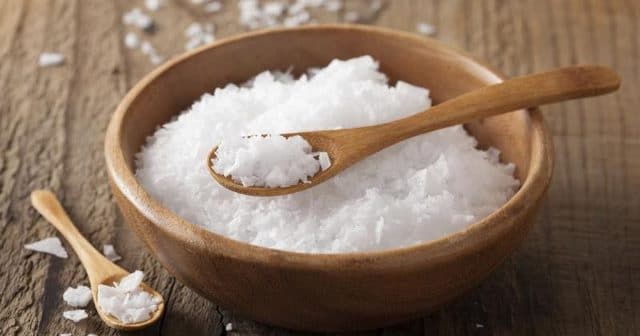
This solution is an effective way to reduce infection. It draws out the pus from the infected site and helps to get rid of bacteria. Moreover, salt solution quickens up the process of healing of granuloma on the nose.
- Make a solution of sea salt in warm water. Soak a clean cotton ball in the saline solution and squeeze out excess water.
- Gently press it on the affected area and let the solution soak in. You can also directly dip your nose into the sea salt solution.
- Later splash warm water to rinse away the salt. Wipe dry with a clean paper towel. You can do this twice a day until the infection has cleared.
2. Chamomile Tea Bag

The Chamomile flower has the potency to reduce inflammation of the skin and helps to heal wounds faster. It soothes the skin to relieve irritations and repair the skin damage done by piercing.
- To make a chamomile tea compress, put a chamomile tea bag in warm water.
- Place it on the infected piercing for about ten minutes, until it cools off.
- Then dip it again in warm water and apply again. This can be done in combination with the sea salt soak.
- Doing this treatment 2 to 3 times a day can reduce the tenderness of the skin.
3. Honey
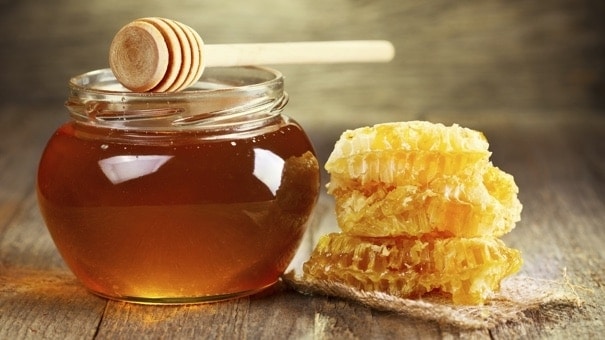
This one is proven old age remedy to heal many skin infections and keeps the skin supple. Dry skin is one of the factors that form keloids. Hence, honey is very useful to get of keloids on the nose occurring after piercing..
- Apply raw honey to the affected area.
- Rinse off after a while, ensuring it does not clog the opening. Repeat this 2 to 3 times a day. If possible do it overnight.
4. Tea Tree Oil
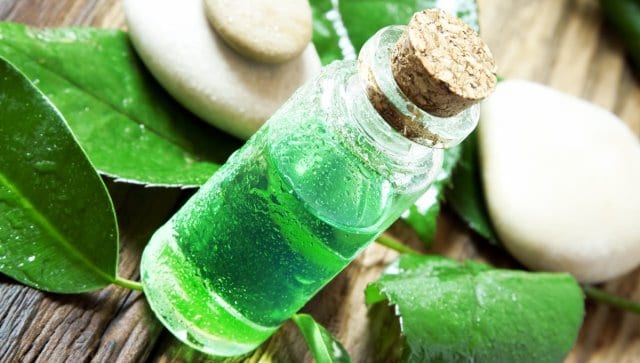
Of late, it is very popular due to its skin fortifying properties. Tea tree oil has antiseptic properties that can kill bacteria and cure the infection near or on the pierced nose.
Moreover, being an anti-inflammatory agent, it can also reduce redness and itching. It is an effective nose piercing bump treatment method.
- Mix a drop of tea tree oil with any skin friendly oil such as coconut oil. Apply to the piercing with cotton.
- Coconut oil also has antibacterial properties to cure skin infections. You can do this twice a day until the redness and bump both disappear.
5. Aspirin Paste
Aspirin is an anti-inflammatory that helps to reduce swelling and irritation. It also drains out discharge from the infected area and within no time help you get rid of a nose piercing pustule or a bump.
- Put some aspirin tablets in 10 ml of water. Allow some time to let it dissolve in the water and turn into a paste.
- Then apply the paste on the infected piercing every night, before going to bed. With regular use, the infection cures and restores the healed piercing.
6. Cold Press
Cold packs are widely used to relieve symptoms of pain. It reduces swelling and irritation, by restricting blood flow to the infected area. It is also an instant remedy to get rid of nose piercing bleeding.
- Take some ice and wrap it in a clean paper towel or cloth. Place it on the piercing for about 10 to 15 minutes.
- Remember that direct contact with ice can further damage the infected piercing. You can apply cold press twice a day.
7. Aloe Vera
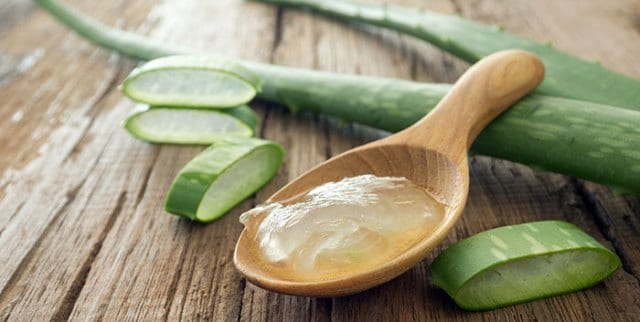
This is a wonderful green plant with many properties to keep skin healthy and fresh. It does wonder to inflamed skin. It soothes redness and itching and at the same hydrate the nose.
Aloe is known to quickly heal nose piercing keloids and scars.
- Firstly clean the piercing. Then apply the gel from aloe vera to the infected site using cotton. You may continue this treatment 2 to 3 times a day.
- Prefer applying fresh aloe gel overnight for better and faster results.
8. Lemon Juice

This remedy is effective to heal keloids. It exfoliates the skin and heals it.
- Take a fresh lemon and squeeze out some juice. You can also dilute it with water and cotton to apply it.
- Apply the lemon juice on the keloid, not in the piercing. Wash with clean water after ten minutes. Repeat the treatment till the bump disappears.
9. Apple Cider Vinegar

This acts as a disinfectant to destroy bacteria that cause infection. It reduces pus present in the bump and soothes the irritation.
- Mix equal portions of raw apple cider vinegar with water. Soak cotton in the solution and gently press on the piercing bump.
- Apple cider vinegar may cause stinging and is not suitable for people with very sensitive skin.
10. Turmeric And Oil
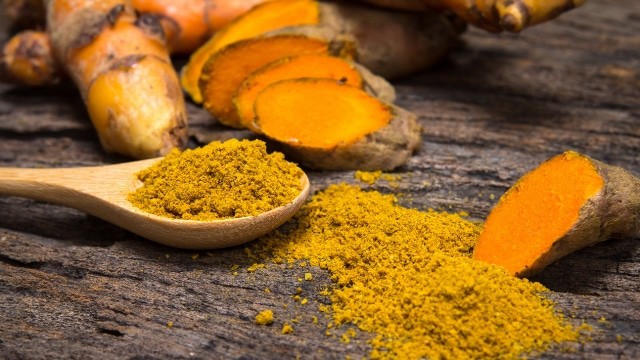
Turmeric is well-known for its antimicrobial properties. This will help to cure the infection and heal the wound.This is the best remedy to get rid of an infected nose piercing bump.
- Make a paste of hot coconut oil and turmeric powder. Apply it gently on the piercing. After 30 minutes, rinse off with water.
- Prefer doing it overnight for better results.
Along with the above home remedies, it is important to note the following, during the infection:
- Clean the piercing daily. Continue to regularly clean the infection. This will wash out the bacteria and help to cure faster. You can use an antibacterial soap or saline solution for cleaning. Take care not to rub hard.
- Do not try to drain the bump with your hand or by any instrument. The bump on your nose piercing won’t go away if you take it out. Further, never use unsterilized instruments as it may further aggravate the condition, by letting in pathogens into the blood.
- Seek medical help to identify if the bump needs to be drained, and ensure that a medical professional does the procedure.
- Do not remove or change the jewelry. Removing will encourage the area to close the wound, thereby causing abscess formation. In the case of allergic reactions, get it removed by a professional.
How Do You Prevent Nose Piercing Infection?

Nose piercing requires good care to ensure proper healing and to keep infections at bay.
a. Firstly, it is important to get a professional to do the piercing. Never attempt it by yourself. An experienced piercer knows his trade well, and this reduces the chance of unlikely events after the piercing. Ensure the use of sterilized instruments.
b. Always use clean hands to handle the piercing. Wash and disinfect your hands before you touch the piercing, to prevent contamination.
c. Use good quality jewelry of the right size. Gold, surgical stainless steel, titanium or niobium would be recommended. Avoid jewelry that may cause allergic reactions.2
d. Do not remove the nosepiece until the piercing heals completely. Let it remain for at least 6-8 weeks after the piercing. You may change your jewelry only after healing, or under situations of allergic response.
e. Clean the piercing regularly with soap and water, to prevent infection and allow quick healing.
f. Do not play with or tug on the nose piece. Take care not to get your nose injured before the piercing heals completely. Be extra cautious when putting on and taking off clothes. Keep away from activities that may irritate the skin as it heals.
g. Avoid using makeup on the skin around the piercing. Stay away from makeup and skin products that may clog the piercing.
h. Avoid using unclean water. Water in public lakes and swimming pools contain pathogens. These can cause infection is a piercing that is still healing.
How To Clean The Nose Piercing
Clean your nose piercing regularly to stay safe from infections. Piercing that gets blocked can become painful and irritating. Remember to handle the piercing gently with clean hands.
Use a wet cotton ball to clean the area around the piercing. Take care to remove any crust that may have formed on the wound. Avoid harsh rubbing and tugging at the jewelry, which may irritate the skin.
You can use a solution of sea salt in warm water for cleaning and quick healing. Dip a cotton ball in the saline solution and drain off excess solution. Gently press the cotton on the piercing. Repeat this a few more times.
Then rinse your nose with clean, warm water to wash off any salt residue, and dry using a clean paper towel.
Avoid using strong disinfectants and cleaning solutions. Using substances like alcohol, hydrogen peroxide or methylated spirit may cause burning and irritation. These also destroy the healing skin cells and can result in scars and bumps.
What Is A Nose Piercing Bump?

A bump may appear at the site of the piercing in the early stages; they normally heal by themselves. However, bumps could also be an indicator of infection.
Bump formation may take place within the initial weeks of piercing. Bumps usually form in areas where the skin tissues are damaged.3 When left unattended, it can turn painful and sore. It also poses the risk of infection. Upon infection, the bump may be filled with pus.
A piercing bump may form due to many reasons. This includes injury or trauma to the piercing before it heals, pulling out or replacing your jewelry before healing, poor hygiene, inefficient piercing practices, and the use of poor quality jewelry.
In many cases, regular cleaning can help to get rid of the bump. But some may call for medical help.
Types Of Nose Piercing Bumps
A nose piercing bumps are classified as follows:
A. Nose Piercing Granuloma (without infection)
A bump that is not infected may be a granuloma. It forms as a result of an overgrowth of tissues. This is a non-cancerous tissue growth at the site of the piercing. The granuloma may bleed easily. They may also drain a clear or yellow discharge.
B. Nose Piercing Keloid
In the event of trauma or injury, the area surrounding the piercing can also develop a scar tissue called keloid. This can form on the outer as well as the inner surface of the nose.
Keloids may develop as a patch of reddish-pink skin around the piercing. It is usually hard and lumpy.
People with dark skin are more prone to keloids. Chances of developing a keloid are high if you’ve already had one at your first piercing. Keloid development may also be genetic.
C. Nose Piercing Pustules (Bumps With Infection)
Bumps with infection resemble a pimple and are called pustules. These will be inflamed, tender and contains discharge.4
Pus formation indicates infection. Such bumps can form an abscess in later stages. The body tries to isolate the infection by forming a lump under the skin. This is called an abscess.
Causes Of Infected Nose Piercing Bump
Next, we shall look at the factors that cause an infected nose piercing.
i. Use Of Unsterilized Equipment
Unsterilized tools and unhygienic practices can introduce disease-causing germs.
ii. Poor Hygiene
Touching the piercing with dirty hands can contaminate it. This may transfer germs that lead to infection.
iii. Inefficient Cleaning
This can harbor pathogens at the site of piercing. Use of wrong cleaning products can increase the chances of infection.
iv. Allergic Reaction To Jewelry
Wearing the wrong type of jewelry can trigger allergic reactions, which may lead to infection. Jewelry of poor quality can hamper the healing process.
v. Use Of Public Swimming Pools
These may be a source of hidden pathogens like bacteria, fungi, and other micro-organisms.
vi. Injury During Healing
Injury or trauma to the piercing before the wound heals can infect it.
How Do You Know If A Piercing Is Infected?
Here are a few signs that can help you identify an infected piercing:
- The nose remains swollen longer than the usual healing time5
- The piercing is painful to touch.
- Prolonged redness, tenderness or heat
- Bleeding from the piercing, after the initial healing
- Excess crust formation on the wound
- Healing process takes longer than required
- Extreme pus-like discharge from the site of piercing
- The skin is hypersensitive to touch
- Foul smell from the piercing
- Fever, nausea, and chills
- Formation of bumps or abscess
- Irritation, itching or burning sensation
When Should You Consult A Doctor
If the condition persists after two weeks, despite home treatments, do not hesitate to consult a doctor. In case the infection is bacterial, the doctor may prescribe an oral antibiotic.
It is advisable to seek medical attention in the following situations:
- When the bump grows larger and develops into a scar
- When you experience fever or extreme pain
- Whenever there is a persistent smelly discharge.
Also Read
Home Remedies To Get Rid Of Nose Piercing Pain
Home Remedies To Get Rid Of Infected Nose Piercing Bump
How To Get Rid Of Nose Piercing Scars
References





